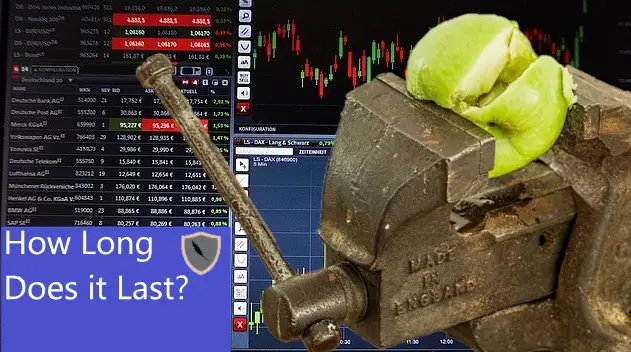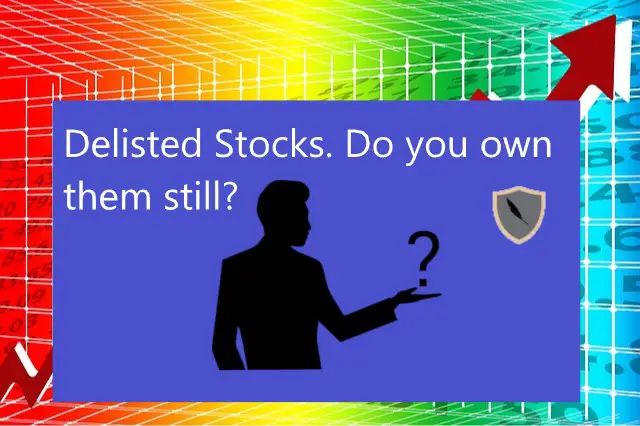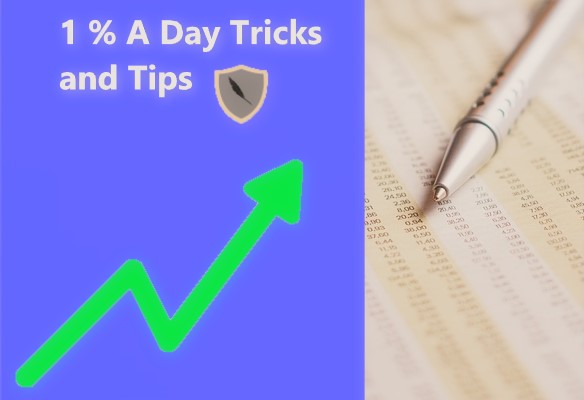When a company goes public it will issue a set amount of shares to the market for the public to buy. This amount of shares available to the public is called the float. Occasionally this float will ‘run out’ of shares available and that’s when something crazy happens.
When a company runs out of stock or shares brokers have to start letting other people borrow ‘imaginary’ shares to meet the public demand. These imaginary shares are loaned out by people who already own them in return for a set interest rate. This program is called the Stock Borrowing Program and it was created in 1981 to meet surging volume demands on the U.S market.
In this article I am going to go over how the Stock Borrowing Program Works (SBP) and show you what happens when a stock runs out of shares. There is a summary of the article at the end if you want to skip.
Here at Chronohistoria I teach people how to generate above average returns in investments. I routinely publish articles that go over individual investment research, methodologies, and tips/tricks of the trade. There is a free newsletter you can sign up for. I use it to keep everyone updated on trends in the market and on the site.
Without wasting any time, let’s jump right into the article: Here is What Happens When A Stock Runs Out of Shares
How The SBP Works to Prevent Stocks From Running Out
The Stock Borrowing Program was created in 1981 to “satisfy priority needs for stocks that are not otherwise filled via normal deliveries.” This in effect means that stocks have an unlimited amount of shares that can be bought and sold so long as there is a demand by the market. (Source)
So long as a stock has people who want to buy or sell it then it will never run out of shares. The brokers will continue to sell shares on the market to meet demand by borrowing shares from their clients who already own them. These borrowed shares will be paid back by the broker in time once the volume on the stock starts to die down.
However this can lead to a huge problem. Ask yourself, what happens if a stock has more shares borrowed then actually exist? What would happen if volume never went down and we entered into a state of constant stock borrowing?
This is where the fun begins, this exact situation has happened before. If you’re prepared and can see the signs coming then you can make huge returns simply by holding a long position during this huge spike in demand for a stock.
How To Profit From When A Stock Runs out
When the market runs out of enough stock to sell to investors then brokers start borrowing stock from people who already hold the stock. These borrowed shares/stock need to be given back to the owner at some point in the future so this action creates a negative amount of shares in the market.
If volume continues above the float size then you will start to see volatility increase dramatically. As more and more people find out that the market has started to run out of stock then more and more retail investors will start buying up the stock. This will cause a runway snowball effect whereas the price rises more and more investors begin to pile into the stock.
As more investors start to buy the stock more and more shares are borrowed as per the 1981 SEC Share Borrowing Program. This further increases volatility as these shares need to be bought back at some point.
You can think of this action as a rubber band winding up to explode. Once you know what you are looking for you can position yourself to make huge returns.
Let me show you an example of what happens when the market runs out of stock.
Market Running Out of GME Shares
In the above image we have a one year stock chart on GameStop. In August of 2020 GameStop was worth $3.77 per share and in February of 2021 it was worth $483 per share. If you invested $10,000 into GameStop in August of 2020 it would have been worth $1,200,000 in February 2021.
This massive explosion in price happened because of the market running out of stock/shares. Over the course of 2020 GameStop’s stock had to keep on being borrowed up until it was 145% more than what was available in January of 2021. At this point it was only a matter of time before everyone had to start closing their position.
As more people began to close their positions at market value GME’s price shot up. As the stock price increased more retail investors bought up stock. This kept the 145% borrow rate still high even during the January pump.
This created a runaway snowball effect where the price of GameStop kept on increasing. The only thing that stopped GME from becoming $10,000 a share was that brokers stopped people from buying more GameStop shares. (Source)
When the market runs out of stock for a particular company then we can see events like the 2021 GameStop even happen. The trick is to recognize when it is happening and position an investment to capitalize upon it.
How To Position An Investment To Make Money When The Market Runs Out of Stock
There are many ways that you can position yourself to make huge returns when a stock runs out. My two favorites are to buy far out of the money calls (OTM) and to buy shares.
Buying far out of the money calls is where you will see huge returns if everything goes right. It’s not uncommon to see returns in the range of 1000-2000% when done properly. However this type of investment strategy only really works for this methodology and its very high risk.
When you take an OTM call you are risking 100% of your investment. Further, this investment will decrease in value over time. This means that everyday the stock does not run out you will lose money. Eventually your position will be worthless and you will have lost 100%.
However if you’re right and the market runs out of stock then you will make returns in the range of 1000-2000%. So it’s a high risk and high reward type of position.
The safer way of making money when a stock runs out is to buy shares and wait. You can always sell the shares for a percentage of what you made and they don’t decline in value over time.
However if you’re right and the market runs out of stock then you will only make around 40-50%. This is still a great return but you will be upset you didn’t take the OTM call and make 1000-2000%.
Depending on the stock I will do either of the above strategies. The goal is to grow an account above the normal market average (9.25%). However sometimes I throw caution to the wind and make massive returns almost overnight.
Summary
When the market runs out of stock brokers will borrow stock from those who hold it to sell to fill orders. This is legal as per the 1981 SEC Share Borrowing Program. However if the market still keeps on buying up the stock this can lead to a huge opportunity for the average investor.
If you see this happening you can position an investment to gain between 40-2000%. This is because as more shares are borrowed volatility will increase. When volatility increases so does price swings. When this happens you can make tons of money.
The trick is to spot when the market is running out of stock.
Conclusion
There you have it, an article that goes over what happens when a stock runs out of shares. Its a bit complex to understand the SBP program. However if you read through the documentation you can make huge returns.
When the market runs out of stock, volatility increases. When volatility increases then you can make money. Here at Chronohistoria I teach people how to do this properly. As such if you like content like this then feel free to subscribe to the free newsletter to remain up to date.
Further, you can check out some of the other articles below.
-
How Long Does a Short Squeeze Last? (3 Answers)

What is the time frame for you short squeeze? Well here is everything you will ever need to know to determine how long it will last.
-
Why You Still Own a Stock After It’s Delisted and How to Sell It

Do you still own a stock after its delisted? How do you sell it? Don’t worry the stock is still worth money and here is how to sell.
-
Can You Make 1% A Day in the Stock Market? (3 Steps)

Making 1% a day in the stock market is hard but defiantly doable. Here are 3 simple steps to helping you achieve this return.
Until next time, I wish you the best of luck in your investing journey.
Sincerely,


